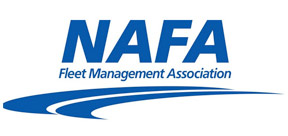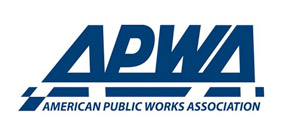Combatting the affordable housing crisis

A home of one’s own is the American Dream, but it is a dream that is out of reach for millions of Americans. Because nearly 53% of households lack the $61,487 annual income to purchase a modest $200,000 home, affordable rental properties are more important than ever. Unfortunately, those units are in short supply.
According to a report by the National Low Income Housing Coalition, the lowest-income renters in the United States face a shortage of 7.1 million affordable and available rental properties. As a result of this shortage, 75% of those renters are forced to spend more than half of their monthly budget on housing.
With an average of 25 affordable units available for every 100 low-income renter households, every state in the union, including the District of Columbia, is impacted. However, communities across the nation are fighting back with developments designed to shore up the shortage.
California dreamin’

In October, the city of South Lake Tahoe, Calif., held a grand opening for the first phase of the Sugar Pine Village project, which includes an initial 68 units ranging from studio to three-bedroom floor plans. Construction on the first-of-its-kind project began two years ago as part of Governor Gavin Newsom’s executive order, N-06-19, created to address the state’s housing crisis by using excess state-owned lands for affordable developments. When completed, Sugar Pine Village will be a 248-unit residential and mixed-use complex that will not only complement the existing neighborhood but also preserve native species and sensitive land.
“Sugar Pine Village opens the door to more affordable living in South Lake Tahoe, creating hundreds of new homes,” said Newsom in a press release. “I congratulate and extend my thanks to Related California and the Saint Joseph Community Land Trust, as well as the state agencies who led the way in transforming this state property into a place where many families can call home.”
Department of General Services director Ana M. Lasso said that these affordable housing projects are stand out examples of the state working together to ensure that every Californian has a place to call home.
“With Sugar Pine Village, DGS is proud to be part of creating a sustainable and inclusive community that reflects the values of South Lake Tahoe,” she said.
New housing in Knoxville
Affordable housing has been an ongoing priority for Knoxville, Tenn., Mayor Indya Kincannon. Building on her predecessor’s efforts, her first budget for FY 2020-21 included a $7.5 million appropriation to support affordable housing, including the city’s $2.5 million investment in the Affordable Rental Development Fund to support affordable and workforce housing. Since then, the city has completed a number of developments across six districts with more under construction or planned for the future.
In April, the company DGA Residential cut the ribbon on Riverside at Holston, a 96-unit affordable housing community across from Holston River Park off of Holston Hill Road. Construction began on the development in 2023 and includes 48 two-bedroom and 48 three-bedroom units as well as a clubhouse, a playground, business center, gym and onsite management. According to news reports, the development was made possible by a $750,000 ARDF investment as well as some financing through the Tennessee Housing Development Agency and U.S. Department of Housing and Urban Development finances.
“We know that housing, and especially affordable housing, is a critical need in our community, and we are committed to addressing that by supporting these opportunities,” Kincannon said. “These 96-units will go a long way to meet that demand while also offering a great location across from Holston River Park.”
Revisiting the plan
Although Hartford, Conn., has been home to the lion’s share of the region’s affordable housing market, the city is not content to rest on its laurels. In compliance with state law, Hartford adopted its latest affordable housing plan in late 2022, setting an ambitious course to combat housing insecurity throughout the community. Goals of the plan include encouraging home ownership and housing production at all levels, increasing residential density citywide, ensuring that renters have the resources and protections that they need, improving housing quality for both renters and homeowners and enhancing how they inform local residents and stakeholders about housing-related resources.
In February 2024, the Connecticut Department of Housing and the Connecticut Housing Finance Authority signed financing agreements for five developments that will create a total of 478 housing units, including 439 affordable housing units for low- and moderate-income renters. The $16.7 million in loans include the Village at Park River development in Hartford.
The Village at River Park is a transformative redevelopment of Westbrook Village, a 40-acre former public housing site that has been repurposed into a mixed-use community designed to meet the needs of a diverse residential population. The first four phases of the project have been completed and are occupied: The final two phases are under construction and will add 58 units to the 260-high quality, one-to-three-bedroom units already on site.
“Our goal was to create a vibrant new community where residents can live, shop and do business,” said Sandy Cloud, owner and founder of The Cloud Company and a former resident of Westbrook Village. “Having lived in Westbrook growing up, I can’t begin to express how exciting it is to see the community we envisioned taking shape.”
Next Article: Chino Hills invests in recycled water to sustain urban green spaces





